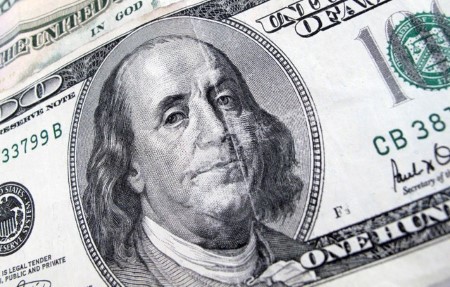




Policy Rate Updates: Double cut finale
 DOWNLOAD
DOWNLOAD

Monthly Economic Update: One for the road
 DOWNLOAD
DOWNLOAD

Inflation Update: Still low, still slow
 DOWNLOAD
DOWNLOAD


Yields fall as Fed weighs slowing or pausing quantitative tightening

NEW YORK – Treasury yields fell on Wednesday after minutes from the Federal Reserve’s January meeting showed that policymakers discussed whether it may be appropriate to slow or pause the runoff in its balance sheet holdings.
The Fed has been letting bonds roll off its balance sheet without replacement since June 2022 as part of its quantitative tightening program. Slowing or pausing the program would be positive for Treasuries as more Fed reinvestment in US government bonds may reduce the amount of debt the Treasury Department needs to offer.
“It’s less debt that the Treasury has to issue, which is bullish for markets,” said Gennadiy Goldberg, head of US rates strategy at TD Securities in New York, adding the comments came as a surprise as “the Fed seemed quite intent to be full speed ahead on runoff up until now.”
Fed officials flagged the challenge of getting a clean read on market liquidity as the Treasury wrangles with the reinstatement of the US debt ceiling on January 2, which affects how it can manage cash.
The Treasury Department has been using extraordinary measures to avert default since then.
Initial policy proposals from President Donald Trump also raised concern at the US central bank about higher inflation, with firms telling the Fed they generally expected to raise prices to pass through the cost of import tariffs, policymakers said at the January 28-29 meeting.
Data on Wednesday showed that US single-family homebuilding fell sharply in January amid disruptions from snowstorms and freezing temperatures, with a rebound likely to be limited by higher costs due to tariffs and elevated mortgage rates.
The yield on benchmark US 10-year notes was last down 0.9 basis points on the day at 4.535%.
The 2-year note yield fell 2.3 basis points to 4.274%.
The yield curve between two-year and 10-year notes steepened by around two basis points to 26 basis points.
Fed funds futures traders are pricing in 37 basis points of easing by year-end, indicating a roughly 50% chance of a second 25 basis point cut.
Market participants are concerned that tariffs will add to inflation and make it more difficult for the Federal Reserve to reduce price pressures and in turn cut interest rates.
But delays in the implementation of many planned tariffs have also boosted expectations that the levies will be used primarily as a negotiation tool.
On Friday, Trump said levies on automobiles would come as soon as April 2. On Tuesday, he said he intends to impose auto tariffs “in the neighborhood of 25%” and similar duties on semiconductors and pharmaceutical imports.
“The market’s reaction function is showing fatigue with respect to the headlines, and it’s going to come down to more – what is actually realized in terms of tariffs? Which feels like a moving target to say the least right now,” said Zachary Griffiths, head of US investment grade and macro strategy at CreditSights in Charlotte, North Carolina.
The Treasury saw soft demand for a USD 16 billion sale of 20-year bonds on Wednesday, which took place before the Fed meeting minutes were released.
The 20-year bonds sold at a high yield of 4.830%, around a basis point above where they traded before the auction.
Demand was 2.43 times the amount of debt on offer, the lowest since November.
The Treasury will also sell USD 9 billion in 30-year Treasury Inflation-Protected Securities on Thursday.
Traders are watching talks between the US and Russia over a potential end to the Russia-Ukraine war.
Trump on Wednesday denounced Ukrainian President Volodymyr Zelenskiy as “a dictator without elections” and said he had better move fast to secure peace or he would have no country left.
(Reporting by Karen Brettell; editing by Barbara Lewis and Nia Williams)
This article originally appeared on reuters.com





 By Reuters
By Reuters